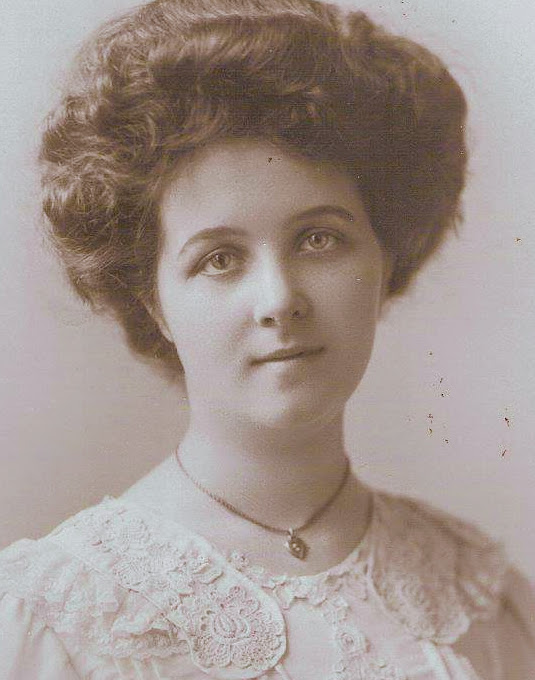
Harriet Leslie Smith was born in Leicester, Massachusetts, in 1873, the fourth and youngest child of James Arnold Smith and Harriet Laraway. Harriet senior was 41 when our Harriet was born—pretty old!
James was a woolen manufacturer, maybe having learned the trade from his own father, a blue dyer named Channing Smith. James’s personal estate was valued at $123,000 in 1870—about $2.7 million in today’s dollars. And in 1870 the Smith household included a “domestic servant,” a young Irish immigrant by the name of Katie Keeland. (No doubt Katie experienced the world quite differently from her employers, the WASPy, blue-blooded Smiths.) One of Harriet’s great-great grandfathers was George Claghorn (1748-1824), the master shipbuilder of the U.S.S. Constitution and a descendant of four of the people who traveled aboard the Mayflower in 1620. So Harriet and her siblings were born into a storied and established Massachusetts family, one with money.
About those siblings:
- Mary Etta (“Ettie”) was 20 when Harriet was born. Ettie lived at home until she was 30, and then moved to Boulder, Colorado, to marry Frank Stickney. She never had children, and she was an accomplished painter and novelist.
- Oscar was 15 when Harriet was born. He grew up to be a politician and one of the earliest divorce lawyers in Reno, Nevada, and he himself divorced at least once.
He too never had children.(Actually, it seems he had a son. I’m looking into it….) He took a strong and public stand against Prohibition, and like Harriet, he was a noted supporter of the Women’s Suffrage movement. - Bert was 10 when Harriet was born. This was my great-grandfather, who died of pneumonia at age 59, leaving my mom’s grandmother Fanchon nearly penniless.
He was the only sibling who had children.(Apparently not!)
In 1885, the Colorado state census shows Harriet and her parents in Boulder, Colorado. Did they move there for a time, or did they just happen to be visiting Mary Etta when the census was taken? In any case, they were back in Massachusetts by the time Harriet went to high school, because she graduated from Worcester High School in Massachusetts, and then attended the Boston Cooking School, class of 1895. The 1914 Woman’s Who’s Who of America says that Harriet also completed a “special course in bacteriology” at the University of Nevada in 1898. Harriet (and her family members) spent a lot of time riding the rails!
Wyoming, the not-so-wild West

Somehow (through Mary Etta?), Harriet met a widowed cattle broker from Longmont, Colorado, by the name of Frank N. Shiek. They married on November 22, 1899, in Longmont, when she was 26 and Frank was 36. They settled in Wheatland, Wyoming, a little town in the middle of nowhere, even by today’s standards. Harriet’s platinum engagement ring featured a 2-carat diamond, six sapphires, and eighteen 1/4-carat diamonds. Notice the way she holds her left hand in the photo, as if to make sure we see it….
After being a cattle broker, or maybe along with being a cattle broker, Frank Shiek was a banker. In 1909, he was vice president of the Bank of Wheatland; by 1912, he was that bank’s president.
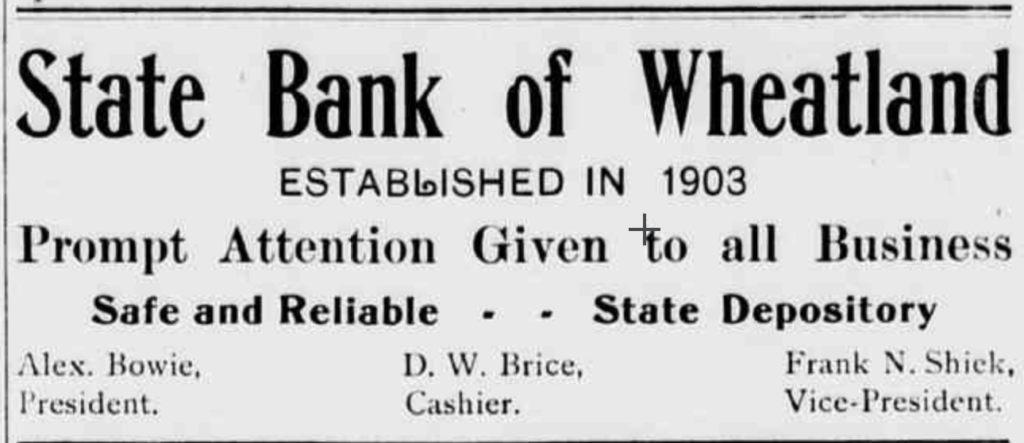
The Wheatland World, later called The Wheatland Times, was a weekly paper focused on the small town of Wheatland, Wyoming, and in Harriet’s day, some of the paper’s reporting seemed a bit like … well … gossip! Here’s one of the paper’s many mentions of Frank and Harriet:
“F. N. Shiek returned Saturday from Colorado and will remain. Mrs. Shiek is in Denver receiving treatment and will remain some six weeks longer.”
The Wheatland World, Vol. 7, No. 19, February 8, 1901
Receiving treatment for what? She lived another 54 years, so if she had a life-threatening illness, the treatment worked. Harriet’s sensitivity to hay fever is mentioned in The Wheatland World on a separate occasion, when Harriet and Frank went to Long Beach, California, to avoid “hay fever season.” But a six-week treatment in Denver for hay fever? I don’t think so, and if that’s what it was, the paper could have mentioned it without impropriety.
Could the treatment have had anything to do with Harriet’s fertility? Her long stay in Denver happened after she had been married for a little over a year, long enough for her to have lost a pregnancy; or long enough for her to have tried to get pregnant, failed, and become worried. Did she and Frank even want to have children? We may never know. But of Mary Etta, Oscar, Bert, and Harriet, only Bert passed along the particular Smith genes that I inherited, the genes of James Arnold Smith and Harriet Laraway.
In Wheatland, our Harriet was a frequent participant in local social events. She gave speeches, did readings, and wrote articles. The October 18, 1901, Wheatland World reports that she read “Casey at the Bat” at a library association evening entertainment. In 1905, the paper included an excerpt of a speech that Harriet gave in Sheridan, Wyoming, after she became president of the State Federation of Women’s Clubs:
The great Emerson said that civilization was the power of good women. If this be true, it may be well for us to consider for a moment the civilizing force to be found in the 700,000 federated club women in the world. The weak women, the women with lazy brains, are not found in the clubs and so not found in our federations….
When any man attacks the question of woman’s club for the given reason that they tend to develop qualities not womanly, he does no harm to the club movement. We have nothing to fear from such charges. The clubs have been too real a factor in developing in the modern woman a broader mind, a larger charity, a keener insight and more unbiased, more accurate judgment.
Mrs. F. N. Shiek, as quoted in The Wheatland World, September 29, 1905
In 1906, the paper reports that Harriet “went to Cheyenne Monday and gave an elocutionary recital Tuesday evening which the papers of that city pronounced the best of the season.” In 1907, she wrote an article in the Wyoming School Journal (quoted in The Wheatland World, January 18, 1907) explaining the importance of educating girls to make them fit to be homemakers. She wanted a Household Economics course added at the University of Wyoming, along with a “Cottage for Girls.” But she was writing to convince the Wyoming state legislature to fund these ideas, and the state legislature was made up entirely of men (until Mary Bellamy was elected to it in 1910). And so I wonder whether, in 1907, talking about women as potential homemakers was Harriet’s way of making sure that her message received a hearing. And maybe a Household Economics course would act as a foot in the door for women to participate more completely at the university. Harriet was a member of the Ebell society later in her life, a group that worked to promote women’s education and participation in cultural and intellectual life. And what did she think of June Downey, her brother’s sister-in-law? (More about June below.)
The 1914 Woman’s Who’s Who says that Harriet was an Episcopalian, a Republican, a member of the Daughters of the American Revolution, and a member and officer in several large clubs. She was also someone who, it seemed, cultivated a presence and a persona in society. When she married, or soon after, she changed her middle name from “Leslie” to “Leyla,” though I can’t find anything about why or how that happened. But “Harriet Leyla Shiek” definitely sounds more interesting than “Harriet Leslie Smith.”
Visiting the other Smiths
Harriet and Frank seem to have lived in Wyoming from 1900 to at least 1920, but clearly Harriet spent time with family elsewhere, including her brother Bert’s family. I think the photo below was taken in 1910, not long after Bert, Bert’s wife Fanchon, and their children (Margaret and Bert, Jr., my grandfather) moved to this house in Oakland, California. Harriet is on the far right, looking like the fussy Victorian aunt I always imagined when I heard tales of “Aunt Harriet.” The cute little guy looking bored in the front row is my grandfather. His mother, Fanchon Downey Smith, sits in the center, and between her and Harriet is Fanchon’s sister Beulah. Beulah and Fanchon were born and raised in Wyoming.

Only four names are given for the ladies, and the fourth is labeled as “Aunt Jane.” Could Aunt Jane have been Aunt June, Fanchon’s half-sister June Downey, also of Wyoming? June had dark hair and wore round glasses, just like the woman second from the left. June was a psychologist, and the first woman to hold a head position at a state university. She published many research articles, along with books, plays, poems, and stories. She never married. If indeed this is Aunt June in the photo, I wonder if the three aunts (and the mystery woman on the left) traveled together—by train, of course—from Wyoming?
The Bert Smiths moved into this house sometime after May 2, 1910, because the 1910 census shows that on that date, Bert, Fanchon, Margaret, and Bert, Jr., resided in the Bakersfield Township in southern California. And according to the California death index and her obituary, Aunt Beulah died Dec. 13, 1910, right there in the very house shown in the photo, with her half-brother Stephen Downey, Jr., in attendance. That puts the photo between May and December, 1910, making my grandfather 7, and his sister 10 or 11.
Below is a photo from nine years later, labeled by my mother. I didn’t crop it, because the composition is interesting. Why isn’t it centered? Was someone else planning to be in it? Where is Fanchon? Could she have taken the photo? What’s behind that door? Margaret’s pose makes it almost casual, almost candid, like the picture before the real picture. The sheer number of photos that exist of my grandfather Bert as a child make me wonder if the family had a camera of their own. Anyway, this post is about Harriet! I like her dress.
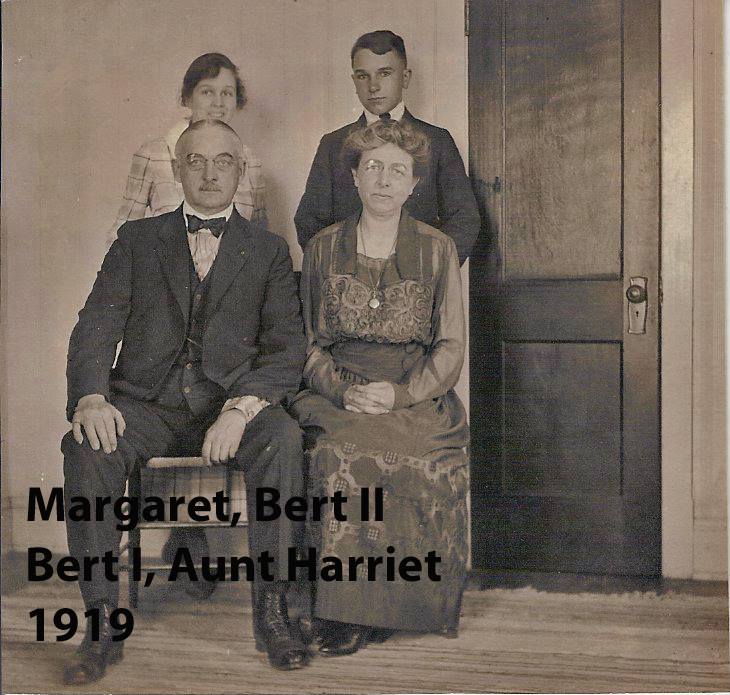
I don’t think Frank came with her on these trips, or wouldn’t he be in the photos? Harriet and Frank had been married 20 years when the photo above was taken, and Harriet was 46.
From Wheatland to Long Beach
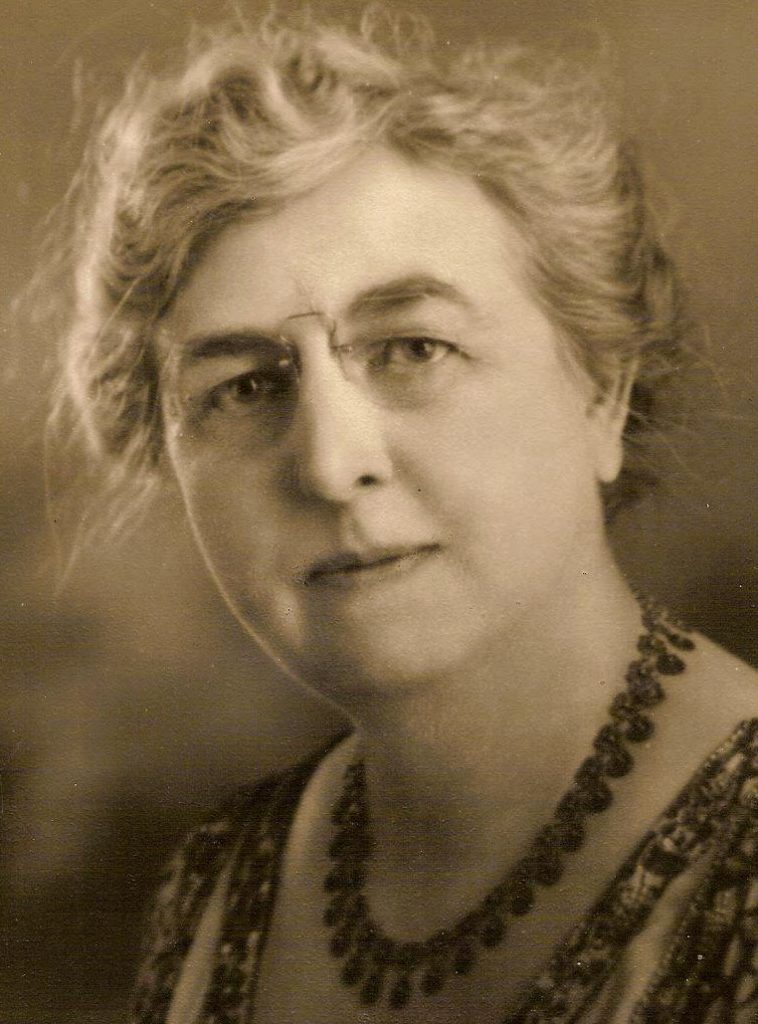
Here’s Harriet with grayer hair, though I don’t know when this photo was taken. She and Frank had traveled to Long Beach, California, often during their years in Wheatland, and sometime between 1920 and 1930 they relocated to Long Beach permanently. It seems to have been their retirement destination, and a place they frequented from 1912 onwards. Harriet’s obituary in the Long Beach Independent is headlined “Mrs. Shiek, Here Since 1912, Dies.”
The photo below was apparently taken in 1939, when Harriet was 65 or 66, not long before Frank died. This is probably Long Beach, outside 291 St. Joseph Ave., the house where they lived from at least 1925 until Frank’s death in April of 1940.

Harriet lived in Long Beach as a widow for the next 15 years, traveling to see family and taking other, perhaps more exotic, trips. When she was 67, she went on a cruise to Guatemala aboard the S.S. Ulua, leaving New Orleans December 25, 1941, and returning a week later. In 1945, she flew from Mexico City to El Paso, Texas—and I imagine there are other travel records I’m just not finding.

This headshot, dated 1950, is from the Wyoming State Archives Photo Collection. It is labeled “MRS. FRANK N. (HARRIETT) SHIEK, 1ST PRESIDENT OF THE WYOMING FEDERATION OF WOMEN’S CLUBS, STUDIO PORTRAIT, SOFT FOCUS.”
The Wyoming Federation of Women’s Clubs still exists as part of the General Federation of Women’s Clubs, and their website includes this image showing Harriet’s place in their history:
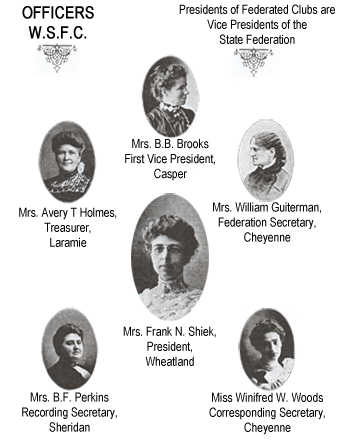
A mystery semi-solved
Harriet died on April 23, 1955, in Los Angeles, California, at age 81. Strangely, given how much documentation I’ve found about the rest of her life, it was challenging to track down an obituary.
But I found one at last! And it says she is survived by her niece Margaret Smith Prestridge and two nephews: Bert L. Smith (my grandfather) and Leighton W. Smith.
Seeing Leighton W. Smith listed there is a shocker! It seems that Harriet’s brother Oscar J. Smith had a child after all. More on Oscar later….
References
Daughters of the American Revolution Lineage Books.
“Frank N. Shiek,” in The Gast-Paul Directory of Bankers and Attorneys and Digests of the Laws. United States: Gast-Paul Publishers, 1912.
The Federation Bulletin. United States: Massachusetts State Federation of Women’s Clubs, 1908.
General Federation of Women’s Clubs of Wyoming, https://www.gfwcwyoming.org/about.html.
Leonard, John William, “Harriet L. Shiek,” in Woman’s Who’s Who of America: A Biographical Dictionary of Contemporary Women of the United States and Canada. United States: American Commonwealth Company, 1914.
United States Federal Census: 1870 and 1880 (Leicester, Massachusetts); 1900, 1910, 1920 (Wheatland, Wyoming); 1930 and 1950 (Long Beach, California). Colorado State Census: 1885.
Wyoming State Archives Digital Collections, http://spcrphotocollection.wyo.gov/luna/servlet.


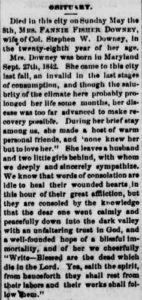

You must be logged in to post a comment.